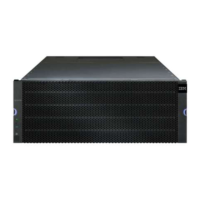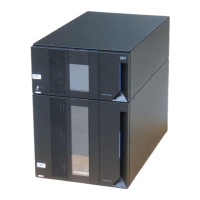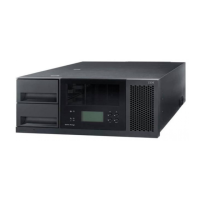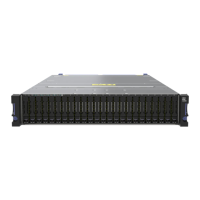storage management software automatically configures the RAID level (which is RAID 6 - 8D+P+Q)
when you create the disk pool. You cannot set or change the RAID level of disk pools or the logical
drives in the disk pools.
Note: Because disk pools can coexist with subsystems, a storage subsystem can contain both disk pools
and subsystems.
Benefits of disk pools
v Better utilization of disk drives - When you add disk drives to a storage subsystem, the storage
management software automatically detects the disk drives and prompts you to create a single disk
pool or multiple disk pools based on the drive type and the current configuration. If disk pools were
previously defined, the storage management software provides the option of adding the compatible
disk drives to an existing disk pool. When new disk drives are added to an existing disk pool, the
storage management software automatically redistributes the data across the new capacity, which now
includes the new disk drives that you added. The data in the logical drives remain accessible when
you add the disk drives to the disk pool. When you delete disk pool logical drives, the capacity of
those logical drives is added to the total usable capacity of the disk pool and therefore it can be reused.
Note: You have the option to manually create a disk pool, if you prefer not to proceed with the
automatic disk pool creation process. Refer to the “Create Disk Pool” on page 3-66 topic for more
information.
v Reduced Hot Spots – A host might access some disk drives in the subsystem for data more frequently
than other disk drives because of the sequential manner in which the data is written to the disk drives.
This frequency of access to disk drives creates hot spots in the subsystem. In a disk pool, the hot spots
are significantly reduced because of the random manner in which the data is spread across a large
number of disk drives. The reduction of hot spots in the disk pool improves performance of the
storage subsystem.
v Faster Reconstruction of Data – Disk pools do not use hot spare disk drives for data protection like an
subsystem does. Instead of hot spare disk drives, disk pools use spare capacity within each drive that
comprises the disk pool.
In hot spare drive coverage, the maximum drive IOPS (I/O per second) limits the speed of
reconstruction of data from the failed drive to the hot spare drive. In a disk pool, the reconstruction of
data is much faster because the spare capacity in all of the disk drives that comprise the disk pool is
used. Additionally, the data to reconstruct after a drive failure is reduced because the data is spread
randomly across more disk drives in a disk pool.
Faster reconstruction of data in a disk pool also reduces the risk of additional drive failures during a
reconstruction operation. For example, consider a drive failure in a RAID Level 5 subsystem that is
comprised of three disk drives. The time it takes to reconstruct the data from the failed drive is
relatively longer for an subsystem. During the reconstruction of data, if another drive fails in this
subsystem, data loss occurs. Unlike subsystems, the time period for which the disk pool is exposed to
multiple drive failures during a reconstruction operation is significantly reduced.
v Reduced Maintenance – You can configure the storage management software to send alert notifications
when the configured capacity of a disk pool is reaching a specified percentage of free capacity.
Additionally, you do not need to manage any hot spare disk drives. You can replace a set of disk
drives during a scheduled maintenance of the storage subsystem.
Limitations of disk pools
The following are limitations of disk pools:
v 10 disk pools per storage subsystem.
v The maximum size of disk pool is 512 TB with controllers having 1 GB cache per controller and FC
and SAS host Interface ports installed.
v The maximum size of disk pool is 1024 TB with controllers having 2 GB cache per controller and FC
and SAS host Interface ports installed.
Chapter 4. Configuring a Storage Subsystem 4-11

